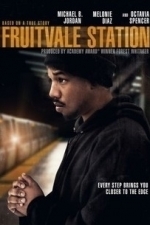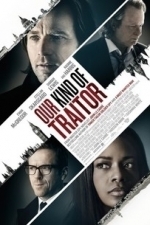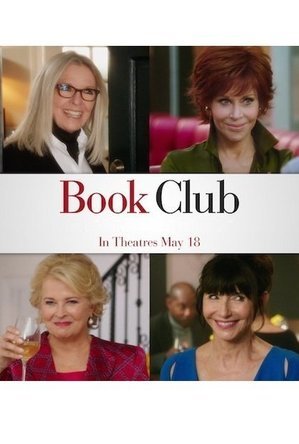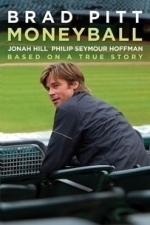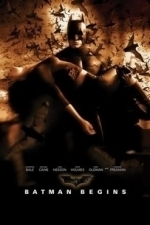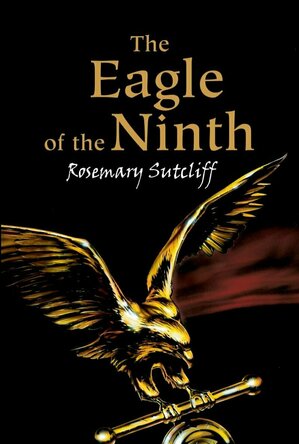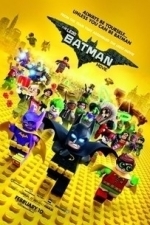Search
Search results
Kirk Bage (1775 KP) rated Fruitvale Station (2013) in Movies
Aug 6, 2020
Here is another movie that was put up for consideration for my upcoming book 21st Century Cinema: 200 Essential Films. It didn’t quite make the final cut, but is part of the long list of honourable mentions – movies that are easy to like and recommend, but aren’t quite of the very highest quality in their respective genres.
Borderline superstar Michael B. Jordan owes his career to Ryan Coogler, which began in earnest in 2013 with the strong effort of true story Fruitvale Station, highlighting the life and final moments of Oscar Grant, who was one of a tragically long list of innocent young men murdered by the police in modern America. Since then he has gone on to star as the eponymous Creed and as the popular Erik Killmonger in Black Panther, making him more or less the most famous black actor under forty currently at work.
I mention him first because having seen the other two films first, I have to admit I wasn’t quite getting it. I mean he is fine in both movies, but nothing world beating. Then you go back to his acheivement in the earlier film and begin to see what he might be capable of given the right scripts. He pretty much embodies Oscar Grant to a degree you believe you are watching a documentary. Which is the major plus point of Ryan Coogler’s direction also.
By pulling us in to the family life of Oscar, as if we were a fly on the wall, we become connected to their story as if we were part of that inner circle, making the inevitable horror of events hit home all the harder. We watch mundane events and conversations take place with a shadow of foreboding that never crosses over into foreshadowing or signposting. The balance is very nicely done.
Melonie Diaz, as girlfriend Sophina, and especially the ever wonderful Octavia Spencer, as loving but grounded mother Wanda, offer solid support, but the camera clings to Jordan by choice, asking us to place ourselves in his shoes and feel the empathy first hand. It is a sober journey, almost totally devoid of directorial flair, which is both a strength and a weakness, ultimately.
With such an awful, heart-rending subject, it can be difficult to remove yourself into a dispassionate view of a film artistically, as the message overpowers your emotions. The best thing that can be said in this case is that the drama never crosses the line of sentimentality or overkill; it merely presents events as they were and asks you to draw your own conclusions. Having said that, I can’t over-praise it simply because the subject needs to be seen, heard, discussed and acted upon with total immediacy in the real world.
This film is already seven years old, and the issues are more pertinent than ever before, as the BLM movement rages all over the world, but especially in the USA, where the culpability and violence of police officers must be addressed and resolved before the loss of one more innocent life. The message delivered by the film is clear and unambiguous – it has to be heeded. And in that sense it is an indespensible film of great power, I would advise you to see.
And with that, it seems a moot point to criticise it, because there isn’t anything negative to say that would say anything useful. I would just say again that it doesn’t quite make the grade of the best 200 films since the Millennium. Whereas, BlacKkKlansman does. An unfair comparison in many ways, but an obvious one in others. See both. Think about them, do what you can, and help make hatred and prejudice a sad fact of history.
Decinemal Rating: 70
Borderline superstar Michael B. Jordan owes his career to Ryan Coogler, which began in earnest in 2013 with the strong effort of true story Fruitvale Station, highlighting the life and final moments of Oscar Grant, who was one of a tragically long list of innocent young men murdered by the police in modern America. Since then he has gone on to star as the eponymous Creed and as the popular Erik Killmonger in Black Panther, making him more or less the most famous black actor under forty currently at work.
I mention him first because having seen the other two films first, I have to admit I wasn’t quite getting it. I mean he is fine in both movies, but nothing world beating. Then you go back to his acheivement in the earlier film and begin to see what he might be capable of given the right scripts. He pretty much embodies Oscar Grant to a degree you believe you are watching a documentary. Which is the major plus point of Ryan Coogler’s direction also.
By pulling us in to the family life of Oscar, as if we were a fly on the wall, we become connected to their story as if we were part of that inner circle, making the inevitable horror of events hit home all the harder. We watch mundane events and conversations take place with a shadow of foreboding that never crosses over into foreshadowing or signposting. The balance is very nicely done.
Melonie Diaz, as girlfriend Sophina, and especially the ever wonderful Octavia Spencer, as loving but grounded mother Wanda, offer solid support, but the camera clings to Jordan by choice, asking us to place ourselves in his shoes and feel the empathy first hand. It is a sober journey, almost totally devoid of directorial flair, which is both a strength and a weakness, ultimately.
With such an awful, heart-rending subject, it can be difficult to remove yourself into a dispassionate view of a film artistically, as the message overpowers your emotions. The best thing that can be said in this case is that the drama never crosses the line of sentimentality or overkill; it merely presents events as they were and asks you to draw your own conclusions. Having said that, I can’t over-praise it simply because the subject needs to be seen, heard, discussed and acted upon with total immediacy in the real world.
This film is already seven years old, and the issues are more pertinent than ever before, as the BLM movement rages all over the world, but especially in the USA, where the culpability and violence of police officers must be addressed and resolved before the loss of one more innocent life. The message delivered by the film is clear and unambiguous – it has to be heeded. And in that sense it is an indespensible film of great power, I would advise you to see.
And with that, it seems a moot point to criticise it, because there isn’t anything negative to say that would say anything useful. I would just say again that it doesn’t quite make the grade of the best 200 films since the Millennium. Whereas, BlacKkKlansman does. An unfair comparison in many ways, but an obvious one in others. See both. Think about them, do what you can, and help make hatred and prejudice a sad fact of history.
Decinemal Rating: 70
Darren (1599 KP) rated Our Kind of Traitor (2016) in Movies
Sep 16, 2019
Characters – Perry is a university professor, he is trying to make amends with his wife on a romantic holiday, he reluctantly gets involved in the information trade with his good nature being used by both sides. Gail is the lawyer wife of Perry, she has become distant from him while still loving him and does question his decision to help Dima. Dima is the Russian mafia handling the accounts, but he wants out to help his own children become safe, he uses his connection with Perry to get MI6 involved in the truth. Hector is the MI6 agent that is willing to work with Dima for the information in exchange for the family, he does have his own grudge with the man they are trying to take down too.
Performances – The performances through the film show us just what Le Carre does with his characters, he gives them good moments, without making them stand out. McGregor is good, but you feel a younger up and comer would have been perfect here, Harris is good and doesn’t put a foot wrong, while Skarsgard enjoys his role, shady but loyal. Damian Lewis brings back his true English role which at times does feel weird knowing how often he has been an American character recently.
Story – The story comes from a John Le Carre novel, so instantly we know we are going to get a thriller that keeps us guessing on what everyone’s motivation will be. The idea that a normal couple get mixed up in the middle of an international information exchange is different and does work for the film because it helps us stay on edge thinking and wondering if they do have a bigger involvement. The story does feel like that one moment to make it great is missing, as everything does end up feeling just normal and good only.
Crime – The crime side of the film follows a criminal looking for a safe way out of the life for his family in exchange for bringing down the mafia’s dealings in London.
Settings – The film splits the settings between London, for the deals, Morocco for the exchanges and the final location for the next chapter of the lives, they work because they show how this world would operate.
Scene of the Movie – The escape.
That Moment That Annoyed Me – It lacks the edge of your seat style of Le Carre novels have given us.
Final Thoughts – This is a solid thriller even if it lacks that final factor to make it one of the best ones, it does the by the book material well, but never develops the characters enough to understand the situation they put themselves in.
Overall: Simple thriller.
Performances – The performances through the film show us just what Le Carre does with his characters, he gives them good moments, without making them stand out. McGregor is good, but you feel a younger up and comer would have been perfect here, Harris is good and doesn’t put a foot wrong, while Skarsgard enjoys his role, shady but loyal. Damian Lewis brings back his true English role which at times does feel weird knowing how often he has been an American character recently.
Story – The story comes from a John Le Carre novel, so instantly we know we are going to get a thriller that keeps us guessing on what everyone’s motivation will be. The idea that a normal couple get mixed up in the middle of an international information exchange is different and does work for the film because it helps us stay on edge thinking and wondering if they do have a bigger involvement. The story does feel like that one moment to make it great is missing, as everything does end up feeling just normal and good only.
Crime – The crime side of the film follows a criminal looking for a safe way out of the life for his family in exchange for bringing down the mafia’s dealings in London.
Settings – The film splits the settings between London, for the deals, Morocco for the exchanges and the final location for the next chapter of the lives, they work because they show how this world would operate.
Scene of the Movie – The escape.
That Moment That Annoyed Me – It lacks the edge of your seat style of Le Carre novels have given us.
Final Thoughts – This is a solid thriller even if it lacks that final factor to make it one of the best ones, it does the by the book material well, but never develops the characters enough to understand the situation they put themselves in.
Overall: Simple thriller.
Bob Mann (459 KP) rated Book Club (2018) in Movies
Sep 29, 2021
A book club without a spine.
Let’s be clear before we start; I am NOT in the demographic that this film is aimed at. And judging from the general reactions of the cinema audience I shared this with – 90%+ of who were women aged over 50 – my views are NOT going to necessarily reflect the general view, since there seemed to be quite a few satisfied customers in the audience. But my personal view would be, if you’re going to make a light-hearted comedy aimed at the lucrative silver pound, then at least make it a good one. For this – for me – felt like 50 shades of lame.
The action – if we can stretch the use of English that far – revolves around the four middle-class white ladies (this film challenges neither class nor racial divides) who meet periodically with copious quantities of wine and goat-cheese stuffed tomatoes to discuss a book. Hotel owner Vivian (Jane Fonda, “Klute”, “On Golden Pond”) is making lots of love but is reluctant to commit to it herself; Diane (Diane Keaton, “”Annie Hall”, “Something’s Gotta Give”) is recently widowed and struggling against being pigeon-holed as an ‘old duffer’ by her two daughters; Sharon (Candice Bergen, “Soldier Blue”, “Miss Congeniality”) has devoted her life to her career as a high court judge at the expense of a physical relationship (“What happens to a vagina that hasn’t been used in 18 years?!”); and Carol (Mary Steenburgen (“Back to the Future Part III”) is in a sexless marriage with her recently retired husband Bruce (Craig T Nelson, “Get Hard“, “Poltergeist”).
Vivian introduces the book club to “50 Shades of Grey” and the book influences everyone’s lives in different ways.
What ensues is 100 minutes of double entendres (“You have a lethargic pussy” says a veterinarian… you get the level) as the four separate stories (bump and) grind towards their separate conclusions. There are one or too laugh-out-loud moments but the majority of the screenplay is merely smile-worthy: “Mostly harmless” as Douglas Adams would have said.
What IS good, which is the reason my rating won’t have a “1” in it, is that it does give a reason to see some of our more senior actors and actresses strut their stuff again on the main stage.
In terms of the lead performances, while Steenburgen is good, it is Candice Bergen who impresses most as a fine comic actress. More please! Fonda and Don Johnson (“Miami Vice”) were supposed to be a hot couple, but their acting to me appeared false and their chemistry non-existent: did they have a fight outside the trailer every morning? And Diane Keaton was… well… Diane Keaton: the ditzy old hippy shtick wore a bit thin for me by the end.
We also have appearances from the great Andy Garcia (“The Godfather Part III”, “Oceans 11”), Wallace Shawn (just SOOooo good as the sleazy mob lawyer in “The Good Wife/Fight”) and (best of all) Richard Dreyfuss (“Jaws”, “Close Encounters of the Third Kind”). Dreyfuss has merely a cameo, but I was just longing for more of his character.
Alicia Silverstone (“Clueless”, “Batman & Robin”) even turns up, but her character (together with her sister played by Katie Aselton) is so annoying and vacuous that it’s not easy to warm to her.
A standout – but not in a good way – is the special effects, with some of the dodgiest green screen work I’ve seen in many a year. Think “North by Northwest” quality….. but that’s nearly 60 years old!
So, it’s not a film I would run to see again, but I’m not going to pan it completely, since if you are of the demographic that enjoys such films, you may really enjoy this one. It reminds me somewhat of “It’s Complicated” – and that’s one of my wife’s personal favourites! It also addresses some key topics that will be of relevance to a senior audience, not normally addressed by movies: male impotence resulting from self-doubt; the need to keep a young and ever-inquiring mind; and the good times to be had by getting out and back in the game again after bereavement (yes, you know who you are and you know I’m addressing YOU here!).
The action – if we can stretch the use of English that far – revolves around the four middle-class white ladies (this film challenges neither class nor racial divides) who meet periodically with copious quantities of wine and goat-cheese stuffed tomatoes to discuss a book. Hotel owner Vivian (Jane Fonda, “Klute”, “On Golden Pond”) is making lots of love but is reluctant to commit to it herself; Diane (Diane Keaton, “”Annie Hall”, “Something’s Gotta Give”) is recently widowed and struggling against being pigeon-holed as an ‘old duffer’ by her two daughters; Sharon (Candice Bergen, “Soldier Blue”, “Miss Congeniality”) has devoted her life to her career as a high court judge at the expense of a physical relationship (“What happens to a vagina that hasn’t been used in 18 years?!”); and Carol (Mary Steenburgen (“Back to the Future Part III”) is in a sexless marriage with her recently retired husband Bruce (Craig T Nelson, “Get Hard“, “Poltergeist”).
Vivian introduces the book club to “50 Shades of Grey” and the book influences everyone’s lives in different ways.
What ensues is 100 minutes of double entendres (“You have a lethargic pussy” says a veterinarian… you get the level) as the four separate stories (bump and) grind towards their separate conclusions. There are one or too laugh-out-loud moments but the majority of the screenplay is merely smile-worthy: “Mostly harmless” as Douglas Adams would have said.
What IS good, which is the reason my rating won’t have a “1” in it, is that it does give a reason to see some of our more senior actors and actresses strut their stuff again on the main stage.
In terms of the lead performances, while Steenburgen is good, it is Candice Bergen who impresses most as a fine comic actress. More please! Fonda and Don Johnson (“Miami Vice”) were supposed to be a hot couple, but their acting to me appeared false and their chemistry non-existent: did they have a fight outside the trailer every morning? And Diane Keaton was… well… Diane Keaton: the ditzy old hippy shtick wore a bit thin for me by the end.
We also have appearances from the great Andy Garcia (“The Godfather Part III”, “Oceans 11”), Wallace Shawn (just SOOooo good as the sleazy mob lawyer in “The Good Wife/Fight”) and (best of all) Richard Dreyfuss (“Jaws”, “Close Encounters of the Third Kind”). Dreyfuss has merely a cameo, but I was just longing for more of his character.
Alicia Silverstone (“Clueless”, “Batman & Robin”) even turns up, but her character (together with her sister played by Katie Aselton) is so annoying and vacuous that it’s not easy to warm to her.
A standout – but not in a good way – is the special effects, with some of the dodgiest green screen work I’ve seen in many a year. Think “North by Northwest” quality….. but that’s nearly 60 years old!
So, it’s not a film I would run to see again, but I’m not going to pan it completely, since if you are of the demographic that enjoys such films, you may really enjoy this one. It reminds me somewhat of “It’s Complicated” – and that’s one of my wife’s personal favourites! It also addresses some key topics that will be of relevance to a senior audience, not normally addressed by movies: male impotence resulting from self-doubt; the need to keep a young and ever-inquiring mind; and the good times to be had by getting out and back in the game again after bereavement (yes, you know who you are and you know I’m addressing YOU here!).
Gareth von Kallenbach (980 KP) rated Moneyball (2011) in Movies
Aug 7, 2019
Baseball economics has long a source of serious debate amongst fans, players, and teams. The contentious issues of how to divide the revenue in an equitable manner led to the cancellation of the playoffs and World Series in 1994 and is still largely unresolved today. While smaller market teams are given funds from a luxury tax imposed on larger payroll teams, it still fails to provide an even competitive playing field when large market teams, such as the New York Yankees, can field teams with a $225 million-plus payroll while the smaller market teams have to make do with budgets often under $40 million.
Naturally, this has put many teams at a competitive disadvantage and most feel that they have no chance to win long-term, even as they develop cheap homegrown talent in their minor-league systems. They lose said talent to the larger market clubs once players become eligible for free agency. It is against this backdrop that the new film “Moneyball” starring Brad Pitt is set.
The film was based on the book of the same name which tells the story and philosophy of Oakland A’s general manager Billy Beane. Beane was a highly recruited baseball player at a high school who turned down a scholarship to Stanford for his shot at the major leagues. Unfortunately for Beane, his career was a major disappointment punctuated with numerous stops between the pros and the minor leagues which resulted in a very mediocre and forgettable career.
Beane got himself a job as a scout and in time worked his way to being the general manager of the Oakland A’s. As the film opens, Oakland has just lost a deciding Game 5 the New York Yankees, whose payroll at the time was almost $120 million greater than Oaklands. Adding further insult to injury, Oakland is unable to re-sign its three biggest stars as they accept large contracts with the Yankees, Red Sox, and other large market teams.
Unable to get any additional funds from his owner, Beane travels to Cleveland in an attempt to find affordable talent via trades. Beane is categorically rebuffed and told that he couldn’t afford many of the players that he’s asking about and that the ones he can afford are not be available to him.
Beane notices a young man, Peter Brand (Jonah Hill) during the negotiations, whose quiet input was heeded by the Indians, even though this is Peter’s first job since graduating from Yale with an economics degree. Beane gets Peter to confide in him about his beliefs that the traditional baseball method for evaluating talent is all wrong and that there is a better way to do it.
Intrigued, Beane hires Brand to be his assistant general manager and the two set out to rebuild the Oakland A’s on a budget. Needless to say this does not sit well with many of the talent scouts or manager Art Howe (a very believable Phillip Seymour Hoffman), who sees the recruiting of washed-up has-beens and never-weres by Beane as misguided and ridiculous.
But Beane and Brand are determined, and using statistical formula that looks at such things as on-base percentages and runs scored as opposed to batting average, home runs, and RBIs, the A’s quickly put together an unlikely team. It doesn’t immediately play out well for the hopeful general manager because Howe is unwilling to play many of the new players that have been brought on. Oakland quickly sinks to the bottom of the league, and many begin to question the sanity of Bean’s approach, to the point that even his young daughter worries that his days as a general manager are numbered.
The film does a good job at showing the inner workings of baseball and Pitt does an amazing job showing the complex nature of Beane. He is a single father dealing with the failure of his playing career, and his inability to get Oakland to be a consistant winner. He puts everything he has into this so-called outrageous scheme and is willing to see it through no matter the cost. Chris Pratt does great supporting work as Scott Hatteberg, one of Beane’s reclamation projects as does Stephen Bisop as aging major-league slugger David Justice.
The film stays very true to historical events and shows the characters as they are, flaws and all. While a true story, Peter Brand, is a fictional charcter based on Paul DePodesta who introduced Beane to the analytical principles of sabermetrics. The movie remains a very interesting character study as well as an examination of the delicate relationships between players, front offices, and ownership where wins and dollars are paramount even when many teams are struggling to make do with less.
That being said the film was a very enjoyable and realistic look at the inner workings of baseball that should not be missed.
Naturally, this has put many teams at a competitive disadvantage and most feel that they have no chance to win long-term, even as they develop cheap homegrown talent in their minor-league systems. They lose said talent to the larger market clubs once players become eligible for free agency. It is against this backdrop that the new film “Moneyball” starring Brad Pitt is set.
The film was based on the book of the same name which tells the story and philosophy of Oakland A’s general manager Billy Beane. Beane was a highly recruited baseball player at a high school who turned down a scholarship to Stanford for his shot at the major leagues. Unfortunately for Beane, his career was a major disappointment punctuated with numerous stops between the pros and the minor leagues which resulted in a very mediocre and forgettable career.
Beane got himself a job as a scout and in time worked his way to being the general manager of the Oakland A’s. As the film opens, Oakland has just lost a deciding Game 5 the New York Yankees, whose payroll at the time was almost $120 million greater than Oaklands. Adding further insult to injury, Oakland is unable to re-sign its three biggest stars as they accept large contracts with the Yankees, Red Sox, and other large market teams.
Unable to get any additional funds from his owner, Beane travels to Cleveland in an attempt to find affordable talent via trades. Beane is categorically rebuffed and told that he couldn’t afford many of the players that he’s asking about and that the ones he can afford are not be available to him.
Beane notices a young man, Peter Brand (Jonah Hill) during the negotiations, whose quiet input was heeded by the Indians, even though this is Peter’s first job since graduating from Yale with an economics degree. Beane gets Peter to confide in him about his beliefs that the traditional baseball method for evaluating talent is all wrong and that there is a better way to do it.
Intrigued, Beane hires Brand to be his assistant general manager and the two set out to rebuild the Oakland A’s on a budget. Needless to say this does not sit well with many of the talent scouts or manager Art Howe (a very believable Phillip Seymour Hoffman), who sees the recruiting of washed-up has-beens and never-weres by Beane as misguided and ridiculous.
But Beane and Brand are determined, and using statistical formula that looks at such things as on-base percentages and runs scored as opposed to batting average, home runs, and RBIs, the A’s quickly put together an unlikely team. It doesn’t immediately play out well for the hopeful general manager because Howe is unwilling to play many of the new players that have been brought on. Oakland quickly sinks to the bottom of the league, and many begin to question the sanity of Bean’s approach, to the point that even his young daughter worries that his days as a general manager are numbered.
The film does a good job at showing the inner workings of baseball and Pitt does an amazing job showing the complex nature of Beane. He is a single father dealing with the failure of his playing career, and his inability to get Oakland to be a consistant winner. He puts everything he has into this so-called outrageous scheme and is willing to see it through no matter the cost. Chris Pratt does great supporting work as Scott Hatteberg, one of Beane’s reclamation projects as does Stephen Bisop as aging major-league slugger David Justice.
The film stays very true to historical events and shows the characters as they are, flaws and all. While a true story, Peter Brand, is a fictional charcter based on Paul DePodesta who introduced Beane to the analytical principles of sabermetrics. The movie remains a very interesting character study as well as an examination of the delicate relationships between players, front offices, and ownership where wins and dollars are paramount even when many teams are struggling to make do with less.
That being said the film was a very enjoyable and realistic look at the inner workings of baseball that should not be missed.
Chris Sawin (602 KP) rated Batman Begins (2005) in Movies
Jun 18, 2019
Before Ben Affleck, but after Adam West, Michael Keaton, Kevin Conroy, Val Kilmer, and George Clooney, Christian Bale was Batman for at least two of the best Batman films out there. With a screenplay by director Christopher Nolan and his brother Jonathan and a story by David S. Goyer, Batman Begins is an origin story. Gotham City is dying since criminals like Carmine Falcone (Tom Wilkinson) are able to get away with murder since, “he keeps the bad people rich and the good people scared,” as Rachel Dawes (Katie Holmes) puts it. Bruce Wayne (Christian Bale) trains with Henri Ducard (Liam Neeson), the right hand of Ra’s Al Ghul (Ken Watanabe), and The League of Shadows.
But The League of Shadows has a skewed view of justice since they believe that more serious crimes should be punishable by death (usually by their hand) while Bruce believes in compassion and the right to a fair trial before passing judgment. Leaving The League of Shadows in shambles, Bruce makes his way back to Gotham after a seven year absence. In Bruce’s own words, “As a man, I’m flesh and blood. I can be ignored. I can be destroyed. But as a symbol I can be incorruptible. I can be everlasting.” This is the story of Batman’s uprising; how a young Bruce Wayne conquered his fear of bats and the death of his parents to become the ominous and fearsome dark knight.
Even when you look back at what Christopher Nolan accomplished in his Dark Knight Trilogy, Batman Begins still holds its own and should be considered one of the best Batman films to date. Before Batman v Superman took the dark and gritty aspects of serious superhero films too far, Batman Begins was the first Batman film since Tim Burton’s Batman to favor a more serious tone in comparison to the campiness that overloads the likes of Batman Forever and Batman & Robin. Christopher Nolan always had the intention of keeping Batman grounded in realism and that concept reflected in its incredibly well-written storyline. Batman Begins is a lot like the Year One comic book storyline with Bruce Wayne returning to Gotham City after training in martial arts and being gone for several years, the inclusion of Carmine Falcone, a blossoming relationship between Batman and Jim Gordon, and The Joker tease on the rooftop even ends the story in similar fashion.
The realistic quality Christopher Nolan was aiming for also translates into the dialogue as nothing seems forced or out of place and everything seems to take place in consistent and reasonable fashion. Aside from Christian Bale, the rest of the cast is far more impressive than it had any right to be with the likes of Michael Caine, Morgan Freeman, Gary Oldman, Cillian Murphy, and Rutger Hauer. Caine adds a level of tenderness to the Alfred character we haven’t really seen before while Cillian Murphy is brilliantly sinister as Jonathan Crane/Scarecrow. Thanks to frequent Christopher Nolan collaborator, director of photography Wally Pfister, Batman Begins is beautifully shot. Colors are always bright and vibrant outside of the Batcave as the dark visuals of the film seem to slowly swallow their colorful surroundings piece by piece.
The inclusion of Liam Neeson in the film is an interesting one for statistical purposes. Prior to Taken, Neeson was known for taking on roles where his character died; Star Wars: Episode I – The Phantom Menace, Gangs of New York, Kingdom of Heaven, and The Chronicles of Narnia: The Lion, The Witch, and The Wardrobe are all prime examples. Neeson’s character Ducard is also the main ingredient in the surprise Nolan often includes in the finale of his films. Neeson has this calm demeanor about him as Ducard that portrays just how in control he is of the training he’s passing onto Bruce. The cast to Batman films are usually packed with stars that are relevant to the time it’s released, but Batman Begins can boast that its supporting cast is just as strong as the leads in the film.
The reasoning behind Christian Bale’s Batman voice is legitimate and you certainly understand why it’s utilized, but the awkward transition between normal voice and rough and raspy vigilante takes some getting used to since you immediately think of the ridiculousness in The Lego Batman Movie or the handful of Deadpool 2 jokes whenever he’s Batman now. Katie Holmes is dull dishwater as an actress. She is the least memorable of the entire cast and is basically that person at a party that everyone knows that’s there but they don’t say anything to anybody before leaving when no one is looking. Maggie Gyllenhaal is able to add some depth with the Rachel Dawes character in The Dark Knight, but it’s as if you can still hear the sound of the Dawson’s Creek theme song echoing in your head whenever Gyllenhaal is on-screen; Katie Holmes is like a huge fart that is still smelt after she’s gone in the sequel she’s not even a part of. There was an overwhelming amount of complaints in the online community regarding how ugly Batman’s new Batmobile, The Tumblr, is in the film. While the vehicle is ugly, at least that ugliness is maintained throughout Nolan’s entire trilogy. Batman likes ugly things in this universe, but at least they’re functional and serve their purpose.
Even with how most individuals feel about The Dark Knight, Batman Begins is still an incredible superhero film that is more than capable as a standalone feature as well as the jumpstart to a new set of Batman films. Christopher Nolan practically reinvented the Batman franchise to a certain extent starting with this film. Depending on how you feel about Ben Affleck’s Batman, Christian Bale was the last satisfying Batman.
Batman Begins feels more like a crime film first and a superhero film second where Batman is an unstoppable force of nature. Stripping the film of its origin retelling, one would think this is what Todd McFarlane is going for with his new Spawn film only to an R-rated extent; a superhero that flourishes in the darkness and has a reputation as this spiritual incarnation of vengeance. Christopher Nolan made something special with his Batman films and it feels like Batman Begins is often overlooked due to the reputation of The Dark Knight. While that perspective isn’t necessarily wrong, fans should at least appreciate Batman Begins in a similar light if not a slightly brighter one.
Batman Begins is currently available to stream for $2.99 on Amazon Prime, YouTube, Vudu, and Google Play and for $3.99 on iTunes. The film is available for a variety of formats on Amazon including 4K/Blu-ray ($24.49), DVD ($9.43), and Multi-Format Blu-ray ($11.49). The Blu-ray is currently $5.22 (5% off its normal $5.50 price) in brand new condition and $3.42 pre-owned on eBay with free shipping on both. You can also get the film as part of a three-disc DVD trilogy pack with The Dark Knight and The Dark Knight Rises or as The Dark Knight Trilogy box set on DVD or Blu-ray. Both options are available on both Amazon and eBay (DVD set is running $11.97 on eBay and $19.72 on Amazon while The Dark Knight Trilogy is available in a variety of formats (regular, ultimate, and special editions) on both sites between $12 and $18.99 unless you want the $69.99 ultimate set.
But The League of Shadows has a skewed view of justice since they believe that more serious crimes should be punishable by death (usually by their hand) while Bruce believes in compassion and the right to a fair trial before passing judgment. Leaving The League of Shadows in shambles, Bruce makes his way back to Gotham after a seven year absence. In Bruce’s own words, “As a man, I’m flesh and blood. I can be ignored. I can be destroyed. But as a symbol I can be incorruptible. I can be everlasting.” This is the story of Batman’s uprising; how a young Bruce Wayne conquered his fear of bats and the death of his parents to become the ominous and fearsome dark knight.
Even when you look back at what Christopher Nolan accomplished in his Dark Knight Trilogy, Batman Begins still holds its own and should be considered one of the best Batman films to date. Before Batman v Superman took the dark and gritty aspects of serious superhero films too far, Batman Begins was the first Batman film since Tim Burton’s Batman to favor a more serious tone in comparison to the campiness that overloads the likes of Batman Forever and Batman & Robin. Christopher Nolan always had the intention of keeping Batman grounded in realism and that concept reflected in its incredibly well-written storyline. Batman Begins is a lot like the Year One comic book storyline with Bruce Wayne returning to Gotham City after training in martial arts and being gone for several years, the inclusion of Carmine Falcone, a blossoming relationship between Batman and Jim Gordon, and The Joker tease on the rooftop even ends the story in similar fashion.
The realistic quality Christopher Nolan was aiming for also translates into the dialogue as nothing seems forced or out of place and everything seems to take place in consistent and reasonable fashion. Aside from Christian Bale, the rest of the cast is far more impressive than it had any right to be with the likes of Michael Caine, Morgan Freeman, Gary Oldman, Cillian Murphy, and Rutger Hauer. Caine adds a level of tenderness to the Alfred character we haven’t really seen before while Cillian Murphy is brilliantly sinister as Jonathan Crane/Scarecrow. Thanks to frequent Christopher Nolan collaborator, director of photography Wally Pfister, Batman Begins is beautifully shot. Colors are always bright and vibrant outside of the Batcave as the dark visuals of the film seem to slowly swallow their colorful surroundings piece by piece.
The inclusion of Liam Neeson in the film is an interesting one for statistical purposes. Prior to Taken, Neeson was known for taking on roles where his character died; Star Wars: Episode I – The Phantom Menace, Gangs of New York, Kingdom of Heaven, and The Chronicles of Narnia: The Lion, The Witch, and The Wardrobe are all prime examples. Neeson’s character Ducard is also the main ingredient in the surprise Nolan often includes in the finale of his films. Neeson has this calm demeanor about him as Ducard that portrays just how in control he is of the training he’s passing onto Bruce. The cast to Batman films are usually packed with stars that are relevant to the time it’s released, but Batman Begins can boast that its supporting cast is just as strong as the leads in the film.
The reasoning behind Christian Bale’s Batman voice is legitimate and you certainly understand why it’s utilized, but the awkward transition between normal voice and rough and raspy vigilante takes some getting used to since you immediately think of the ridiculousness in The Lego Batman Movie or the handful of Deadpool 2 jokes whenever he’s Batman now. Katie Holmes is dull dishwater as an actress. She is the least memorable of the entire cast and is basically that person at a party that everyone knows that’s there but they don’t say anything to anybody before leaving when no one is looking. Maggie Gyllenhaal is able to add some depth with the Rachel Dawes character in The Dark Knight, but it’s as if you can still hear the sound of the Dawson’s Creek theme song echoing in your head whenever Gyllenhaal is on-screen; Katie Holmes is like a huge fart that is still smelt after she’s gone in the sequel she’s not even a part of. There was an overwhelming amount of complaints in the online community regarding how ugly Batman’s new Batmobile, The Tumblr, is in the film. While the vehicle is ugly, at least that ugliness is maintained throughout Nolan’s entire trilogy. Batman likes ugly things in this universe, but at least they’re functional and serve their purpose.
Even with how most individuals feel about The Dark Knight, Batman Begins is still an incredible superhero film that is more than capable as a standalone feature as well as the jumpstart to a new set of Batman films. Christopher Nolan practically reinvented the Batman franchise to a certain extent starting with this film. Depending on how you feel about Ben Affleck’s Batman, Christian Bale was the last satisfying Batman.
Batman Begins feels more like a crime film first and a superhero film second where Batman is an unstoppable force of nature. Stripping the film of its origin retelling, one would think this is what Todd McFarlane is going for with his new Spawn film only to an R-rated extent; a superhero that flourishes in the darkness and has a reputation as this spiritual incarnation of vengeance. Christopher Nolan made something special with his Batman films and it feels like Batman Begins is often overlooked due to the reputation of The Dark Knight. While that perspective isn’t necessarily wrong, fans should at least appreciate Batman Begins in a similar light if not a slightly brighter one.
Batman Begins is currently available to stream for $2.99 on Amazon Prime, YouTube, Vudu, and Google Play and for $3.99 on iTunes. The film is available for a variety of formats on Amazon including 4K/Blu-ray ($24.49), DVD ($9.43), and Multi-Format Blu-ray ($11.49). The Blu-ray is currently $5.22 (5% off its normal $5.50 price) in brand new condition and $3.42 pre-owned on eBay with free shipping on both. You can also get the film as part of a three-disc DVD trilogy pack with The Dark Knight and The Dark Knight Rises or as The Dark Knight Trilogy box set on DVD or Blu-ray. Both options are available on both Amazon and eBay (DVD set is running $11.97 on eBay and $19.72 on Amazon while The Dark Knight Trilogy is available in a variety of formats (regular, ultimate, and special editions) on both sites between $12 and $18.99 unless you want the $69.99 ultimate set.
David McK (3663 KP) rated The Eagle of the Ninth in Books
Jan 28, 2019
So, this is history (and told in the foreword of this novel): Sometime about the year AD 117, the Roman Ninth Legion marched north to deal with an uprising among the Caledonian tribes (in what is now Scotland), and were never heard of again. Also, nearly eighteen hundred years later during excavations at Silchester, a wingless Roman Eagle was dug up, buried under the fields.
But how did it come to be there?
While no-one knows for certain, those 2 facts together form the starting point for this story, which sees the son of the last commander of said Legion traveling North 'beyond the [Hadrians] wall' to search for and return said Eagle after his partial recovery from his laming during an attack on his outpost, and after he hears rumours of an Imperial Eagle in the Celts hands.
He is accompanied on this journey by his freed slave, whom he had previously (before the journey, during his recovery) rescued from the Arena.
While I had previously seen the 2011 film of the same name, I'd actually never read the source material before, so was unable to say how truly it stuck to the same.
Now I have, and I have to say: said movie does stick remarkably close, even if not entirely faithfully. the book, I found, could be a bit slow at times, and also tended to gloss over the less pleasant (shall we say) aspects of Roman society, with the Romans largely portrayed as civilized as compared to the uncouth Barbarians.
But then again, this is -supposedly - a children's book, and also a product of its time (first published, remember, in the 1950s).
But how did it come to be there?
While no-one knows for certain, those 2 facts together form the starting point for this story, which sees the son of the last commander of said Legion traveling North 'beyond the [Hadrians] wall' to search for and return said Eagle after his partial recovery from his laming during an attack on his outpost, and after he hears rumours of an Imperial Eagle in the Celts hands.
He is accompanied on this journey by his freed slave, whom he had previously (before the journey, during his recovery) rescued from the Arena.
While I had previously seen the 2011 film of the same name, I'd actually never read the source material before, so was unable to say how truly it stuck to the same.
Now I have, and I have to say: said movie does stick remarkably close, even if not entirely faithfully. the book, I found, could be a bit slow at times, and also tended to gloss over the less pleasant (shall we say) aspects of Roman society, with the Romans largely portrayed as civilized as compared to the uncouth Barbarians.
But then again, this is -supposedly - a children's book, and also a product of its time (first published, remember, in the 1950s).

Radio Free Albemuth
Book
A preliminary to Dick's masterwork, Valis, in which Phil appears as an explicitly named...
Movie Metropolis (309 KP) rated The Lego Batman Movie (2017) in Movies
Jun 11, 2019
All Hail the Bricks
LEGO may have just single-handedly saved the DC Universe. Yep, you heard me right; the construction toy has come to the aid of one of the comic-book heavyweights in spectacular fashion.
Of course, this is not the first time the world’s biggest toy company has released a film. 2014’s LEGO Movie catapulted the popular bricks into the minds of more people than ever before, it was an astounding success, and deserved every inch.
Now, they’re back with The LEGO Batman Movie, a film with so many side jokes and movie references, it’s impossible to spot them all the first time around.
There are some big changes brewing in the city of Gotham, but if Batman (Will Arnett) wants to save the city from the Joker’s (Zach Galifianakis) hostile takeover, he may have to drop the lone vigilante shtick, try to work with others and perhaps, learn to lighten up; if that’s humanly possible. Maybe his superhero sidekick Robin (voiced by Michael Cera) and loyal butler Alfred (played by Ralph Fiennes) can show him a thing or two?
After depressing cinema-goers with Batman v Superman: Dawn of Justice and the studio interference that caused Suicide Squad to be a hideous mess (which is referenced in the flick marvellously), DC was in serious trouble – its universe was unravelling before it had even got going. Marvel certainly had nothing to worry about from its biggest rival, but that may have changed after this.
Everything from the voice acting to the ridiculously dry script and exceptional animation makes The LEGO Batman Movie a treat for children and adults. There are references to: get ready… Jurassic Park, Harry Potter, Doctor Who, Gremlins, The Lord of the Rings and every single Batman film to name but a few, all expertly placed within a story that betters any DC film before it.
The cast gels together perfectly. Will Arnett clearly had a ball playing the caped crusader, channelling Ben Affleck and Christian Bale flawlessly. Michael Cera gives his best performance in years and Ralph Fiennes is great as Alfred. Would you believe me if I said Mariah Carey even got in on the action? Well, she does. There are small roles for Channing Tatum, Jonah Hill and Eddie Izzard too.
Elsewhere, the animation is of course, blocky. Beautifully so in fact. It’s always exciting seeing individual locations transformed into LEGO and Gotham is no exception. It’s rendered to an exquisite standard with each and every frame stuffed to the brim with colour and detail. The music is also a highlight throughout with Lorne Balfe’s faithful score juxtaposed with some original songs and classic pop hits.
Overall, The LEGO Batman Movie was always going to be a gamble, but perhaps less of a risk considering the low quality of DC’s current crop of films. With some great animation, a genuinely funny and at times heart-warming story and a cast that works together incredibly well, it’s a cracking addition to the ever-expanding superhero genre.
https://moviemetropolis.net/2017/02/11/all-hail-the-bricks-the-lego-batman-movie-review/
Of course, this is not the first time the world’s biggest toy company has released a film. 2014’s LEGO Movie catapulted the popular bricks into the minds of more people than ever before, it was an astounding success, and deserved every inch.
Now, they’re back with The LEGO Batman Movie, a film with so many side jokes and movie references, it’s impossible to spot them all the first time around.
There are some big changes brewing in the city of Gotham, but if Batman (Will Arnett) wants to save the city from the Joker’s (Zach Galifianakis) hostile takeover, he may have to drop the lone vigilante shtick, try to work with others and perhaps, learn to lighten up; if that’s humanly possible. Maybe his superhero sidekick Robin (voiced by Michael Cera) and loyal butler Alfred (played by Ralph Fiennes) can show him a thing or two?
After depressing cinema-goers with Batman v Superman: Dawn of Justice and the studio interference that caused Suicide Squad to be a hideous mess (which is referenced in the flick marvellously), DC was in serious trouble – its universe was unravelling before it had even got going. Marvel certainly had nothing to worry about from its biggest rival, but that may have changed after this.
Everything from the voice acting to the ridiculously dry script and exceptional animation makes The LEGO Batman Movie a treat for children and adults. There are references to: get ready… Jurassic Park, Harry Potter, Doctor Who, Gremlins, The Lord of the Rings and every single Batman film to name but a few, all expertly placed within a story that betters any DC film before it.
The cast gels together perfectly. Will Arnett clearly had a ball playing the caped crusader, channelling Ben Affleck and Christian Bale flawlessly. Michael Cera gives his best performance in years and Ralph Fiennes is great as Alfred. Would you believe me if I said Mariah Carey even got in on the action? Well, she does. There are small roles for Channing Tatum, Jonah Hill and Eddie Izzard too.
Elsewhere, the animation is of course, blocky. Beautifully so in fact. It’s always exciting seeing individual locations transformed into LEGO and Gotham is no exception. It’s rendered to an exquisite standard with each and every frame stuffed to the brim with colour and detail. The music is also a highlight throughout with Lorne Balfe’s faithful score juxtaposed with some original songs and classic pop hits.
Overall, The LEGO Batman Movie was always going to be a gamble, but perhaps less of a risk considering the low quality of DC’s current crop of films. With some great animation, a genuinely funny and at times heart-warming story and a cast that works together incredibly well, it’s a cracking addition to the ever-expanding superhero genre.
https://moviemetropolis.net/2017/02/11/all-hail-the-bricks-the-lego-batman-movie-review/

Extraordinary Ordinariness: Everyday Heroism in the United States, Germany, and Britain, 1800-2015
Book
Everyday heroes and heroines--ordinary men, women, and children who are honored for actual or...
PP
Picture Palace to Penny Plunge: Reading Cinemas: 2017
Book
Twenty different cinemas have graced Reading's streets over the years, many long forgotten and some...
